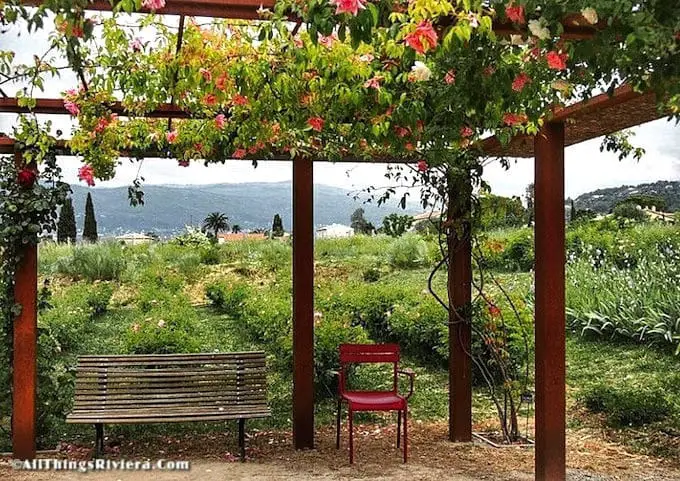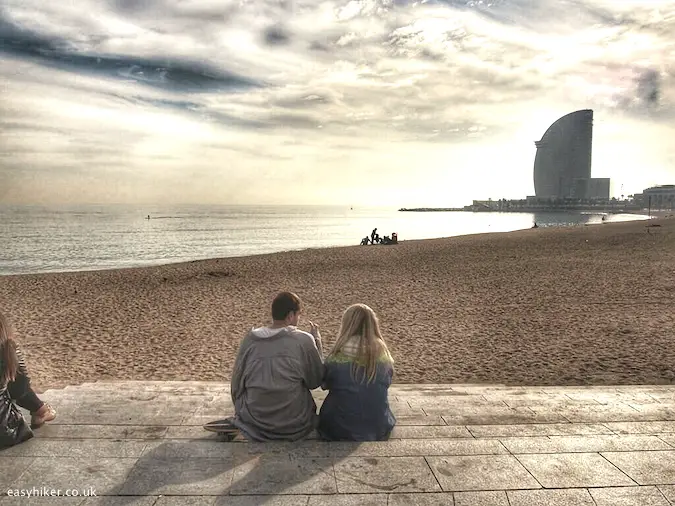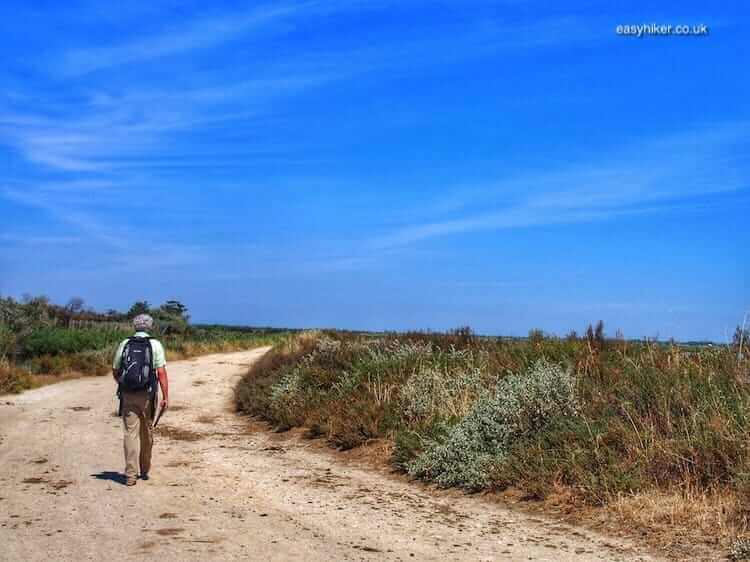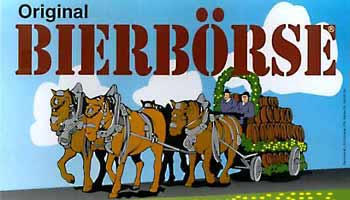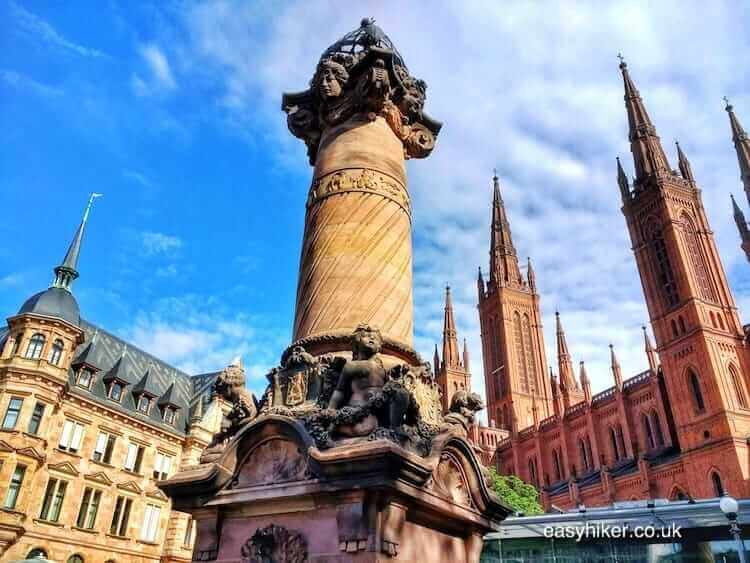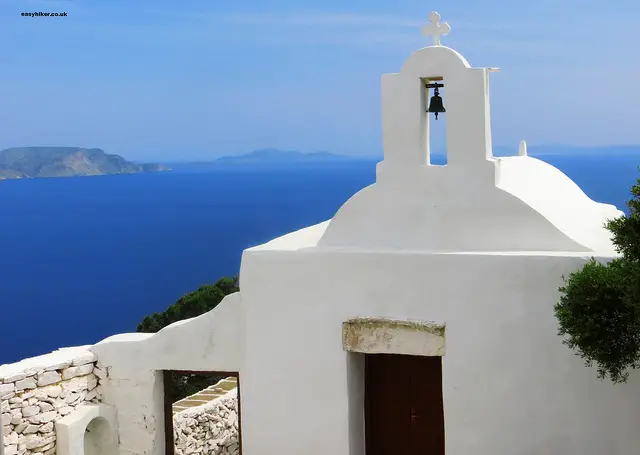Any longer journey that is in fact made up of several shorter trips – where you spend one day here and two days there – will, in the end, come out as a mixed bag. Going on journeys like that is the modern equivalent to attending a show in a variety or “vaudeville” theatre where the individual acts vary greatly in terms of character and quality – some of which overstay their welcome while you wish more stage time had been given to the really good ones.
Our recent trip to Calabria was a lot like that: we had decided to spend three days in Tropea, which proved to be a somewhat generous allocation of time (we are not beach bunnies and ran out of things to do sometime during day two).
Our stay in Lamezia Terme, on the other hand, was squeezed in at the very end of the trip as an afterthought: the local airport (Calabria’s biggest) offered a convenient flight home, but not on the day of our preliminarily scheduled arrival.
Which is why we decided, rather than to fiddle with our travel schedule, to use the extra day for taking a look at the town itself. In the end, we agreed that we could easily have stayed a little longer.
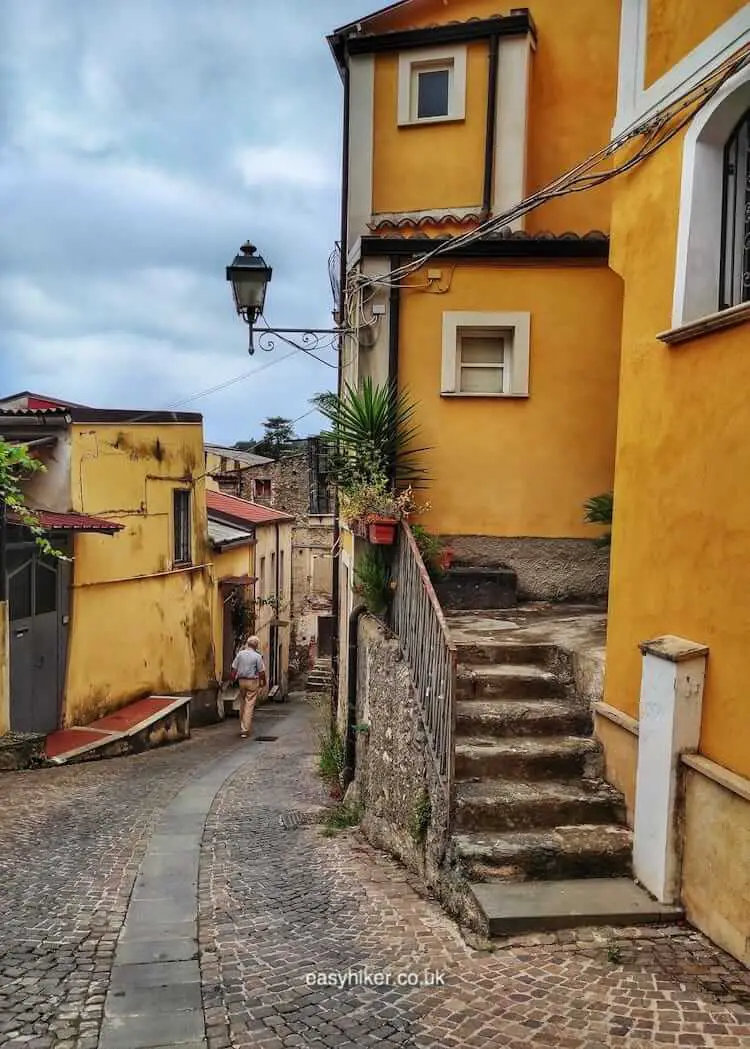
Lamezia is a hardscrabble town that has clearly seen better times. During our visit, I came across a local newspaper article about the sad fate of the local high street. Corso Numistrano, once lined with fine dining establishments and purveyors of luxury goods, had apparently deteriorated to the point where its main purpose today was to serve as a parking lot for the town’s office workers.
While we were in town, the Corso had been shut down for traffic because Lamezia was celebrating one of its big annual church festivals. There were therefore no parked cars in the street on that day, but even in its festive dress, the high street has an air of desolation and abandonment about it.
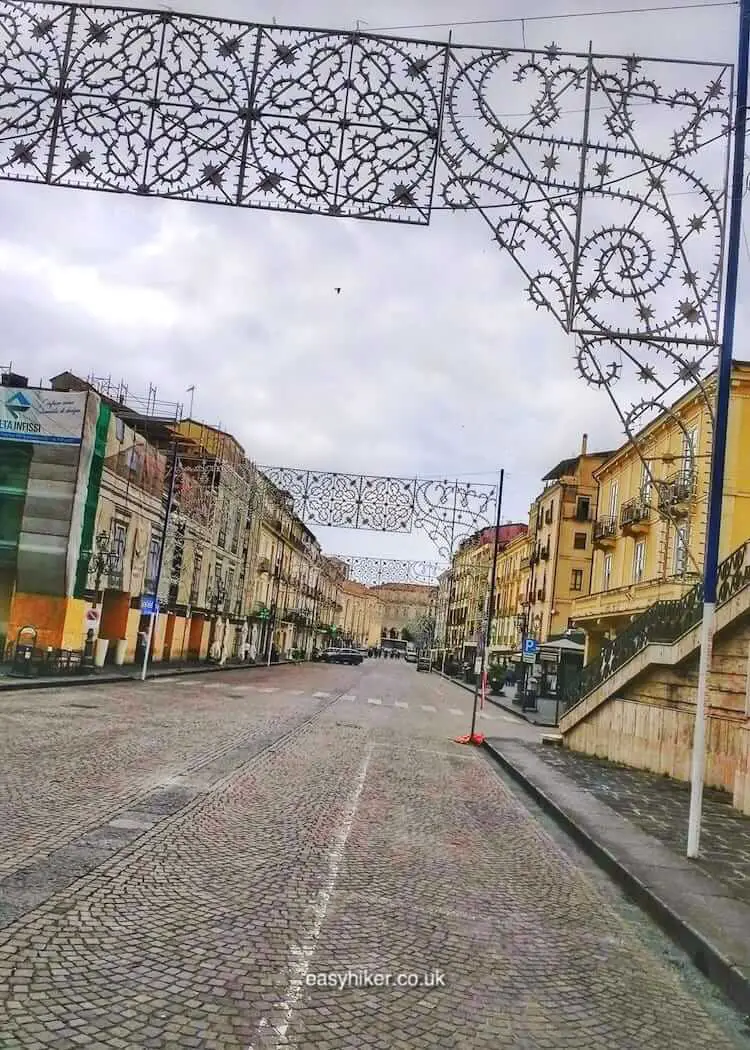
The festival in question, by the way, was the Feast of Saint Anthony, which is a big thing in Italy, specifically so in the south. Nevertheless, there are many towns across the country where you could stroll around on 13 June in total ignorance of the day’s significance.
Lamezia, clearly, is not one of those.
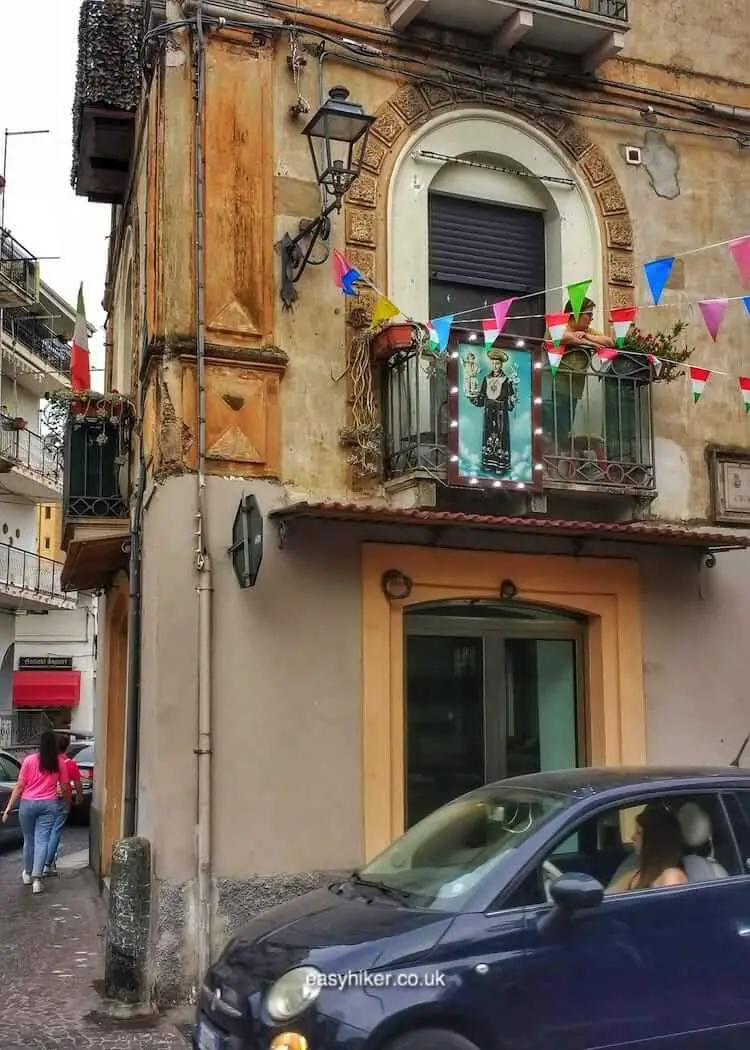
We had planned to take it easy and to spend our only full day in town by having a late breakfast, doing some shopping in the afternoon and enjoying a long lunch in between. When we got up in the morning, however, the sky was overcast and the weather not as mercilessly hot as it had been during the previous week.
How We Enjoyed the Hardscrabble Charm of Lamezia Terme
Much to our surprise, we found that we still had some energy left – and decided to make our way to the Norman Castle on top of the old town.
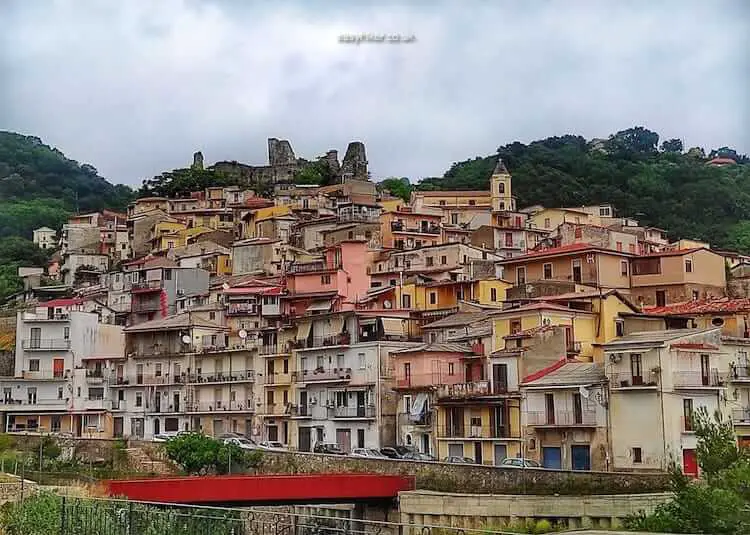
The route leads through a warren of small and even smaller streets …

… past some bucolic scenery …
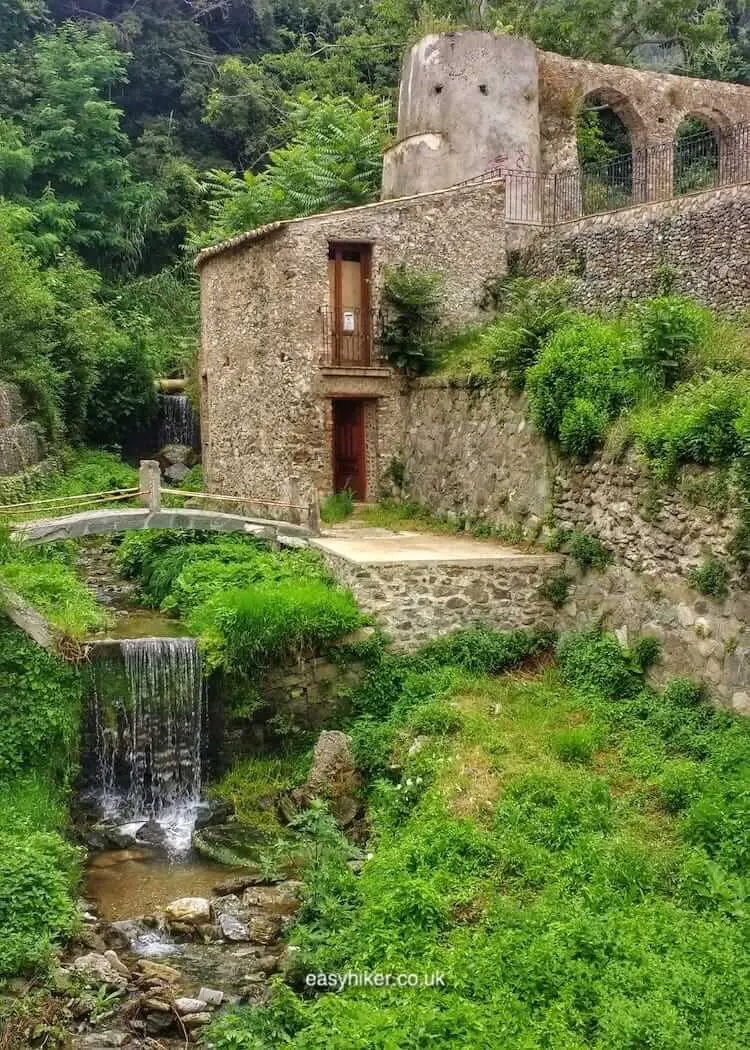
… and some of the snapshots you can take along the way would not look out of place in a nostalgic photo book called something like This Was Calabria In The 1950s – or the 1850s, come to think of it.
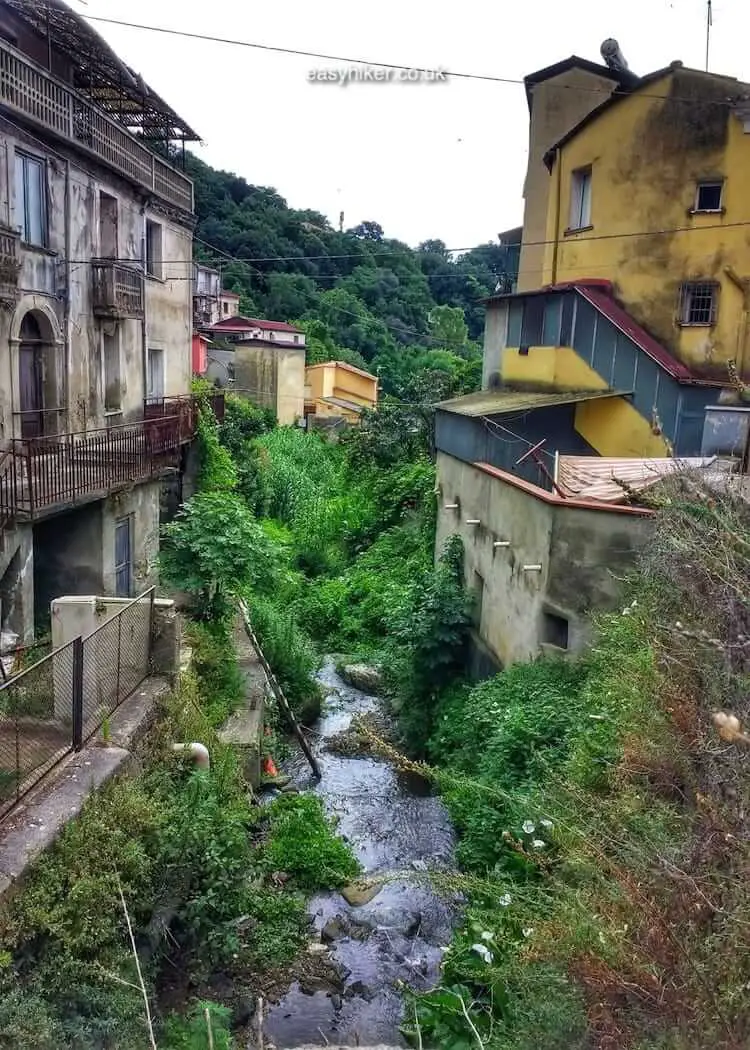
Everywhere along the streets, different generations of residential homes make each other look far better than either would on their own: the perfect symbiosis between the old-but-picturesque and the modern-but-formulaic.
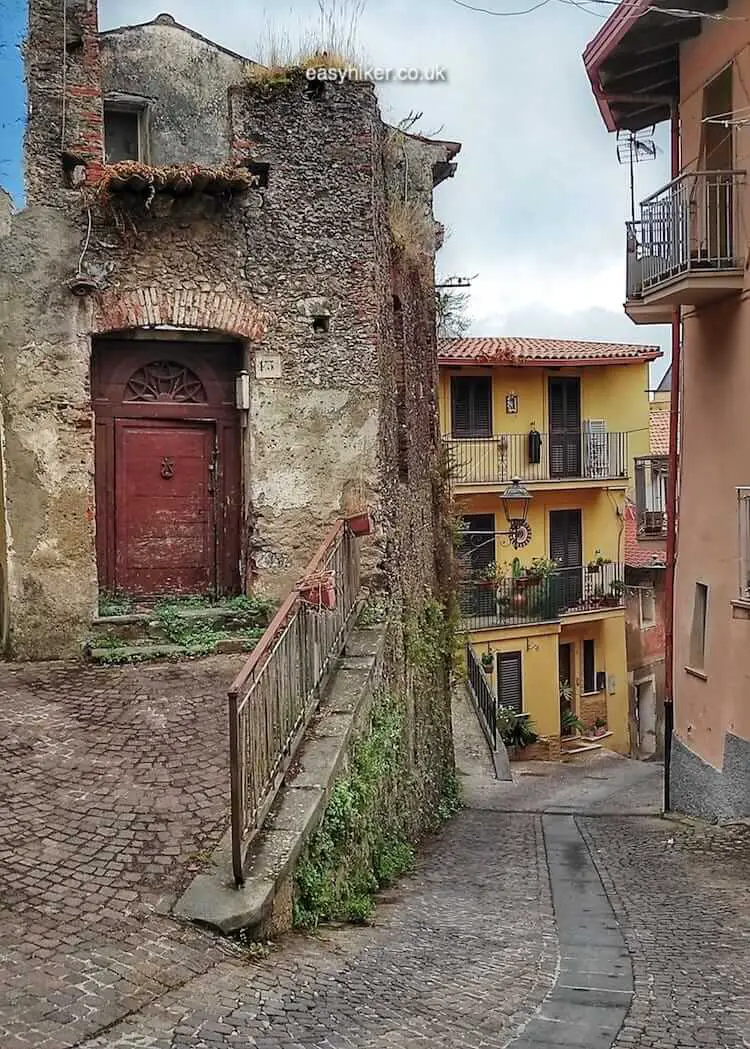
And quite suddenly, there it was, the castle, seemingly growing out of the old town’s urban fabric, although, in fact, predating the surrounding buildings by several centuries.
In this environment of ordinariness, even a castle ruin that is 1000+ years old somehow managed to look ordinary, making it all look like cut from a single piece of cloth.
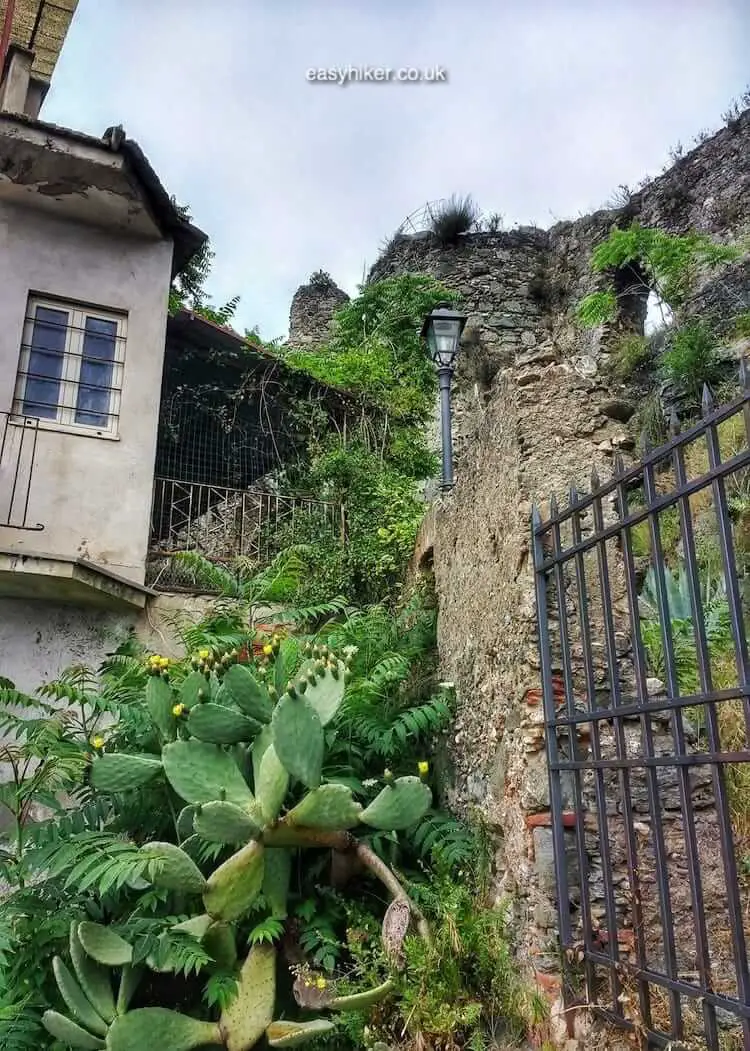
This is probably the right moment to add a note of explanation. In what way was this unashamedly ordinary town superior to Tropea, the recent winner of a nationwide urban beauty contest with its historic old town, bijou restaurants and instantly instagrammable sea views?
Here is what the American writer Bonnie Tsui has to say on the charms of hardscrabble ordinariness (in an article that was recently published by the New York Times):
“Authentic” is overused these days when talking about travel, but I think it means wanting to know something real about a place and the people who live there. So often, the vacation vision sold to us involves a preordained, highlight-reel itinerary that has been followed by millions of others, one that promises to be amazing, eye-opening, new! And yet so little truly surprises — we’ve already seen it all on Instagram or TikTok. There’s something to be said for partaking of the parts of daily life that are not designed especially for you, the visitor. … The mundane given the glitter of the novel. Maybe that’s what travel is, at its best.
But be aware that, as a visitor, you do not get many chances of partaking in the daily life of your host city – which makes it all the more important to seize the opportunities that do present themselves: have your evening meal in a simple trattoria, …
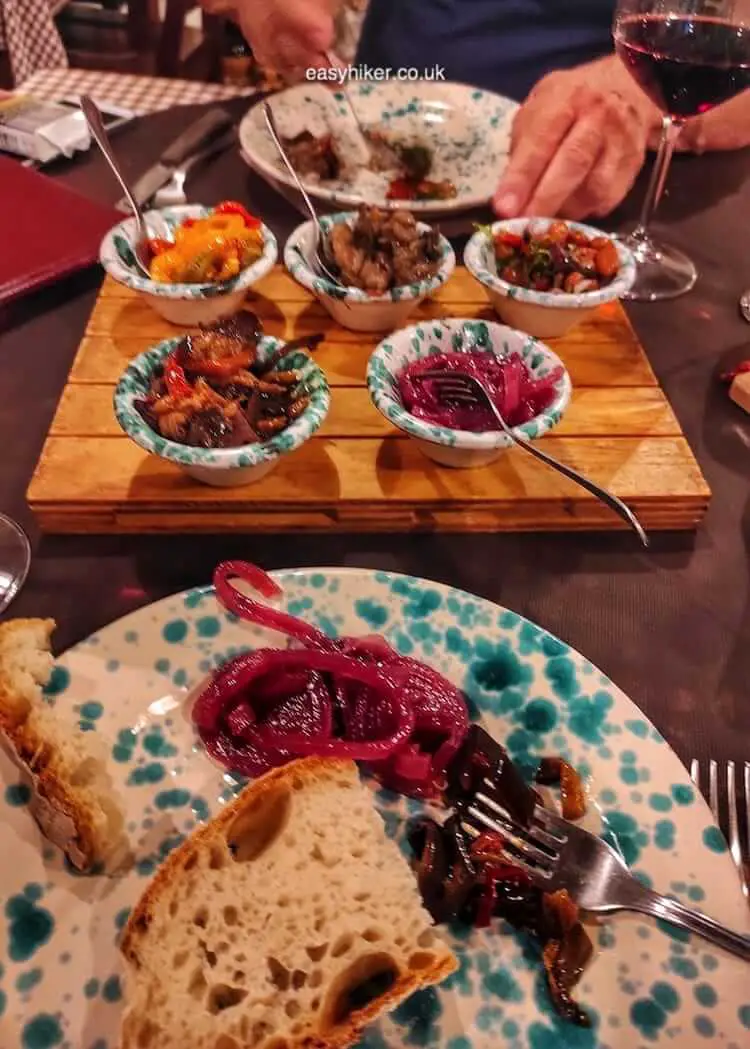
… and share the joys of the evening passegiata, or, where this daily ritual of provincial Italy merges into the festivities of a church festival, join the party.
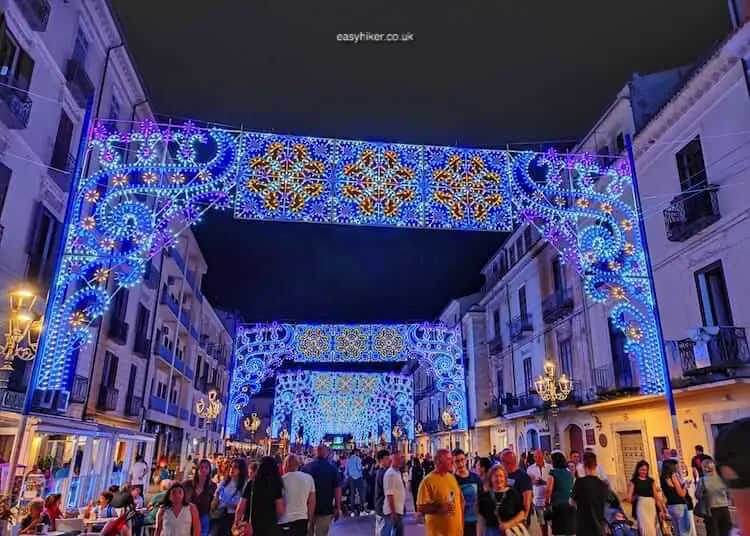
Sometimes, even a walk down a nondescript street in a residential area will give you an interesting travel experience – more interesting than a visit to a museum or the umpteenth baroque church of your trip. Give it a chance and try it – you may be surprised!
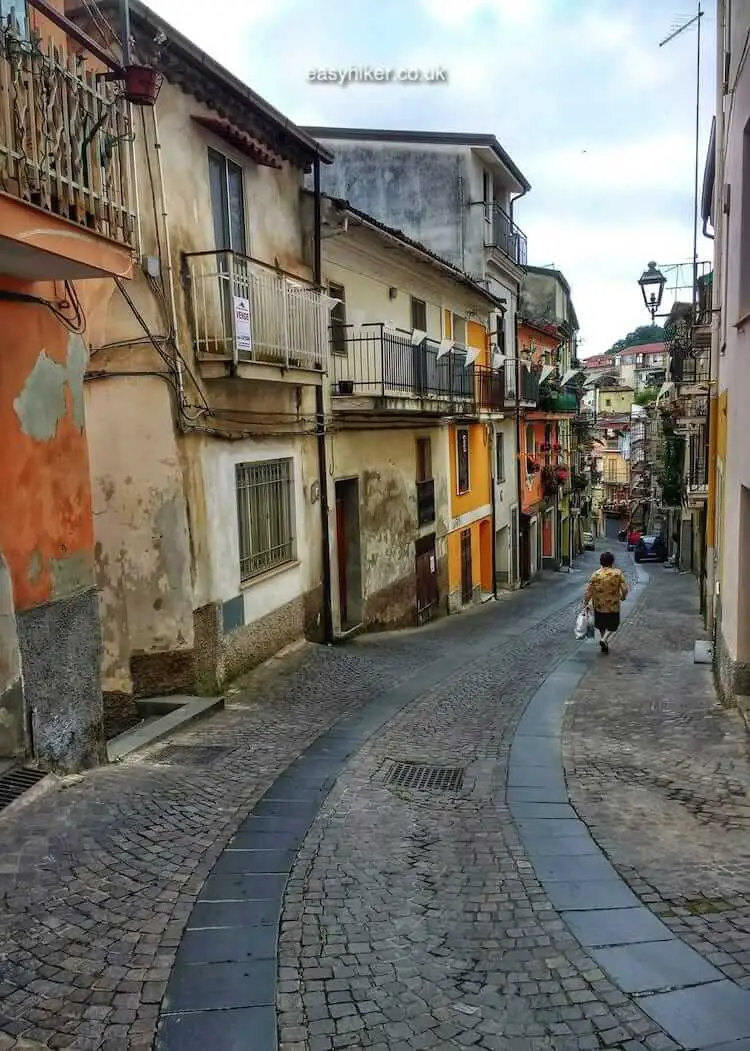
Tips on how to get to enjoy the hardscrabble charm of Lamezia Terme
Finally, if you decide to sample the hardscrabble charms of Lamezia in person, a few practical notes about the town:
We stayed in the part of the municipality called Nicastro, the largest by far of Lamezia’s three boroughs which are separated by several kilometres of fields and olive orchards.
Lamezia Terme was created as an administrative unit only in 1968, but Nicastro’s history goes back to the early Middle Ages when the “Neo Castrum” and a Benedictine Abbey were created here. (Both the Norman fortress and the abbey were destroyed in the earthquake of 1638, one largely and the other fully.)
The other two boroughs reach even further back in time: Sambiase, approx. 5 km to the south, was famous in Roman times for its thermal springs, while Santa Eufemia Lamezia, another 5 km down the road to the coast, is ancient enough to receive a mention in Homer’s Odyssee (when the town was called Terina).
Today, Santa Eufemia is mainly known as the site of the Lamezia Terme airport, one of the biggest in the Italian south. Long-distance trains also stop there (at the somewhat misleadingly called Lamezia Centrale train station), but the actual settlement of Santa Eufemia was only built in the 1930s after a near-by swamp had been successfully drained, and Nicastro is by far the more interesting option.
To go there from Lamezia Terme station, take a bus (line 4 or 5) from a stop approx. 100 metres to the right when you leave the station (there is usually one bus every 30 to 45 minutes). The bus stop right in front of the station mainly exists to serve the airport. Lines no. 4 and 5 will take you to the Colombo bus terminal in Nicastro, itself a 15-minute walk away from the (small) Nicastro train station near the town centre.
Yes: they do not exactly make it easy for the visitor to get there, but Nicastro/Lamezia is not a tourist town, which is, after all, the charm of it. And the very point of actually going there.

